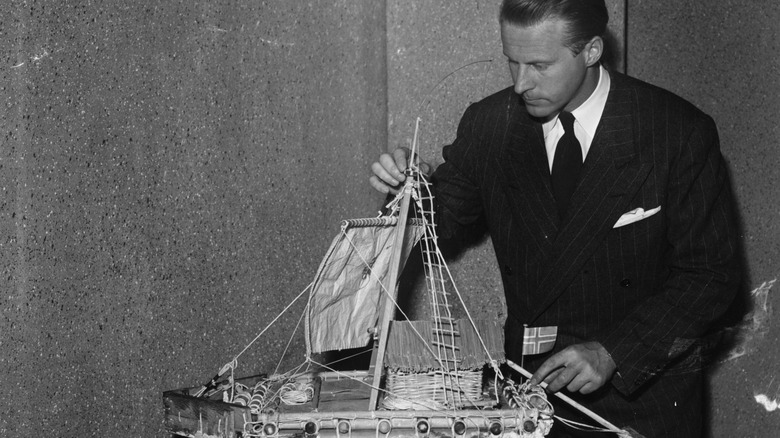Travel Guides Outdoor Adventures
Peter Koch
In 1947, Norwegian adventurer Thor Heyerdahl set off one of the greatest, seemingly-doomed-to-failure-from-the-start expeditions of all time: A 3,800-nautical-mile voyage from South America to Polynesia on a primitive raft manned by rookie sailors and non-swimmers. He wasn’t seeking pure adventure or to see what lay beyond the horizon, but to prove an equally hair-brained theory: That South Americans could have settled Polynesia, rather than Asians, as was commonly believed at the time.
To prove the theory to a doubting scientific community, Heyerdahl constructed a 45-foot-long balsa wood and bamboo raft, recruited a crew of four Norwegians and a Swede, and set sail from Peru for Polynesia, guided by the stars and bound westward on the Humboldt and South Equatorial Currents. The crew endured some hairy shark encounters, two major storms and a slow, gradual sinking, but still managed to make landfall on the tiny island of Raroia 101 days later. Point proven (though it’s now generally accepted that Polynesia wasn’t settled by South Americans).
Now, Norwegian directors Joachim Rønning and Espen Sandberg have recreated the voyage in a rollicking adventure flick, Kon-Tiki. Is the danger and suspense of the ride over-hyped? Maybe, but then again, it’s hard to oversell one of the modern era’s boldest expeditions.

